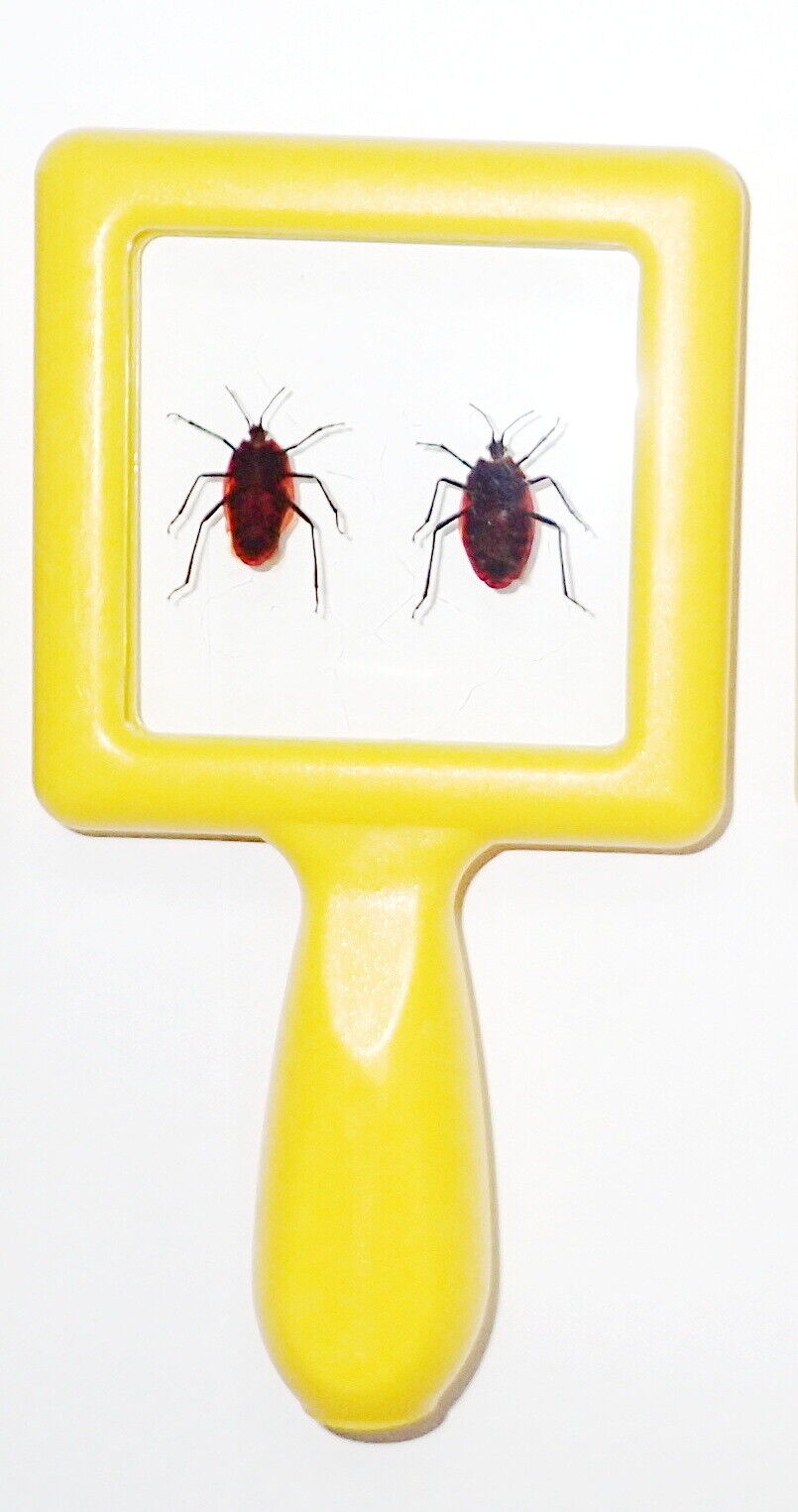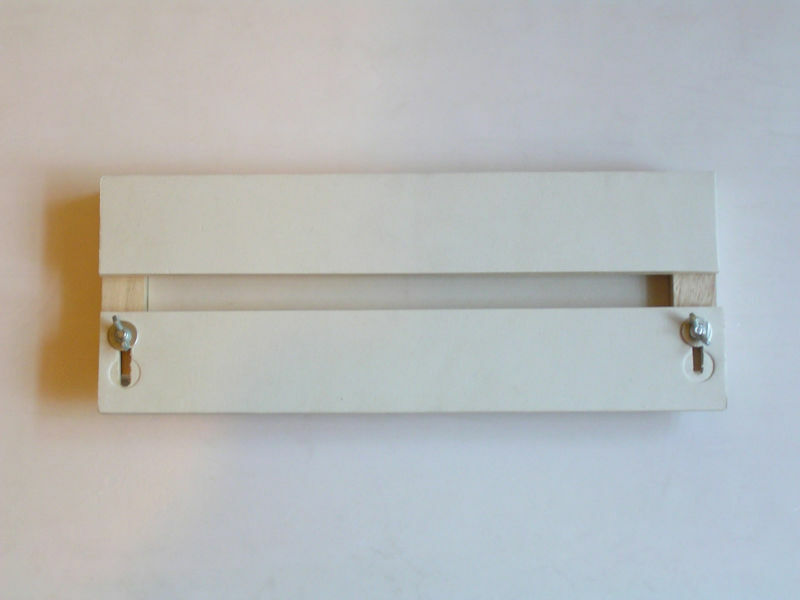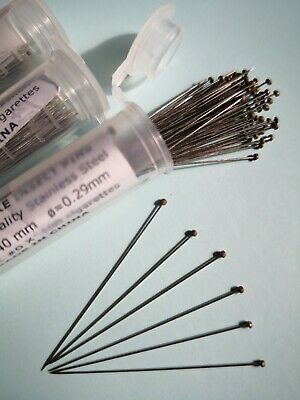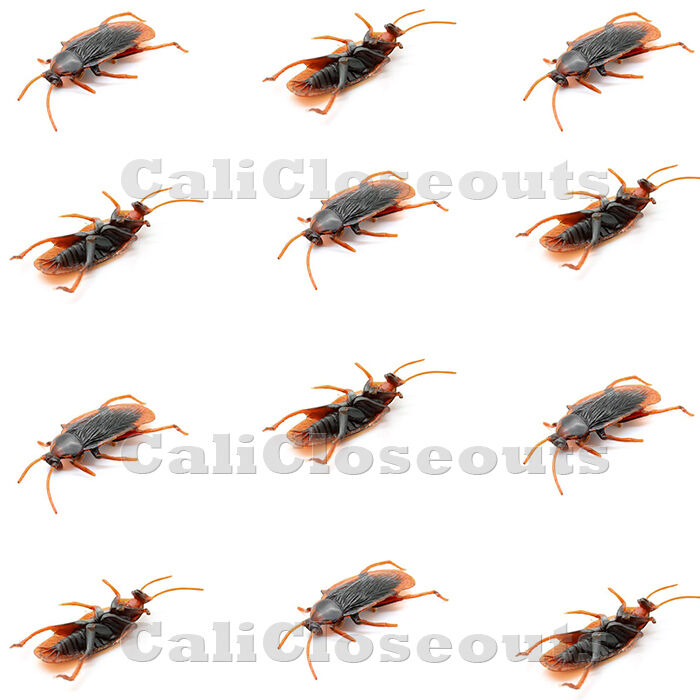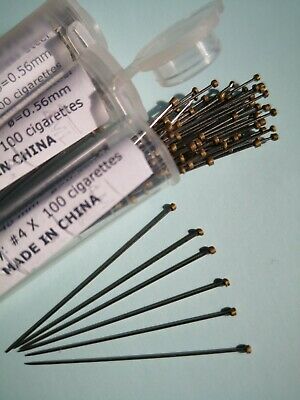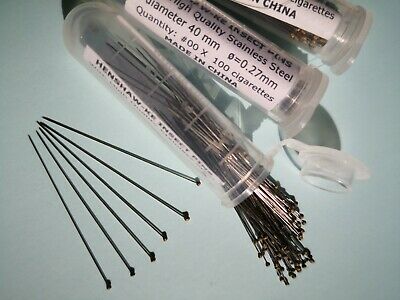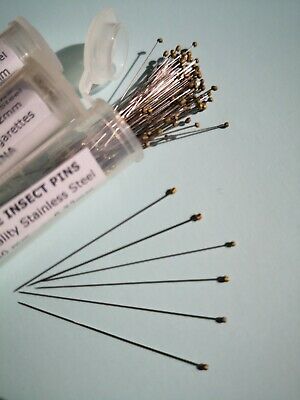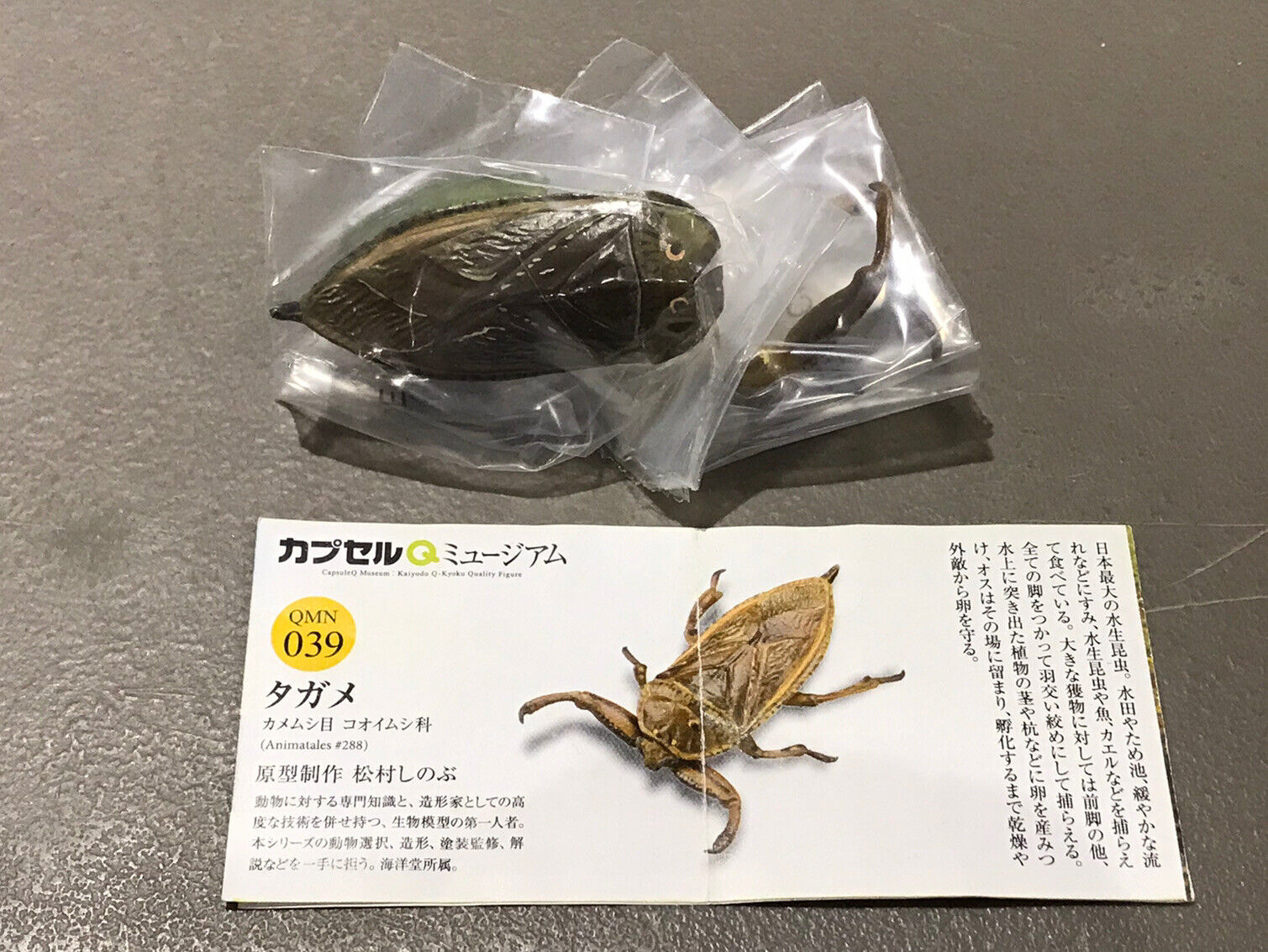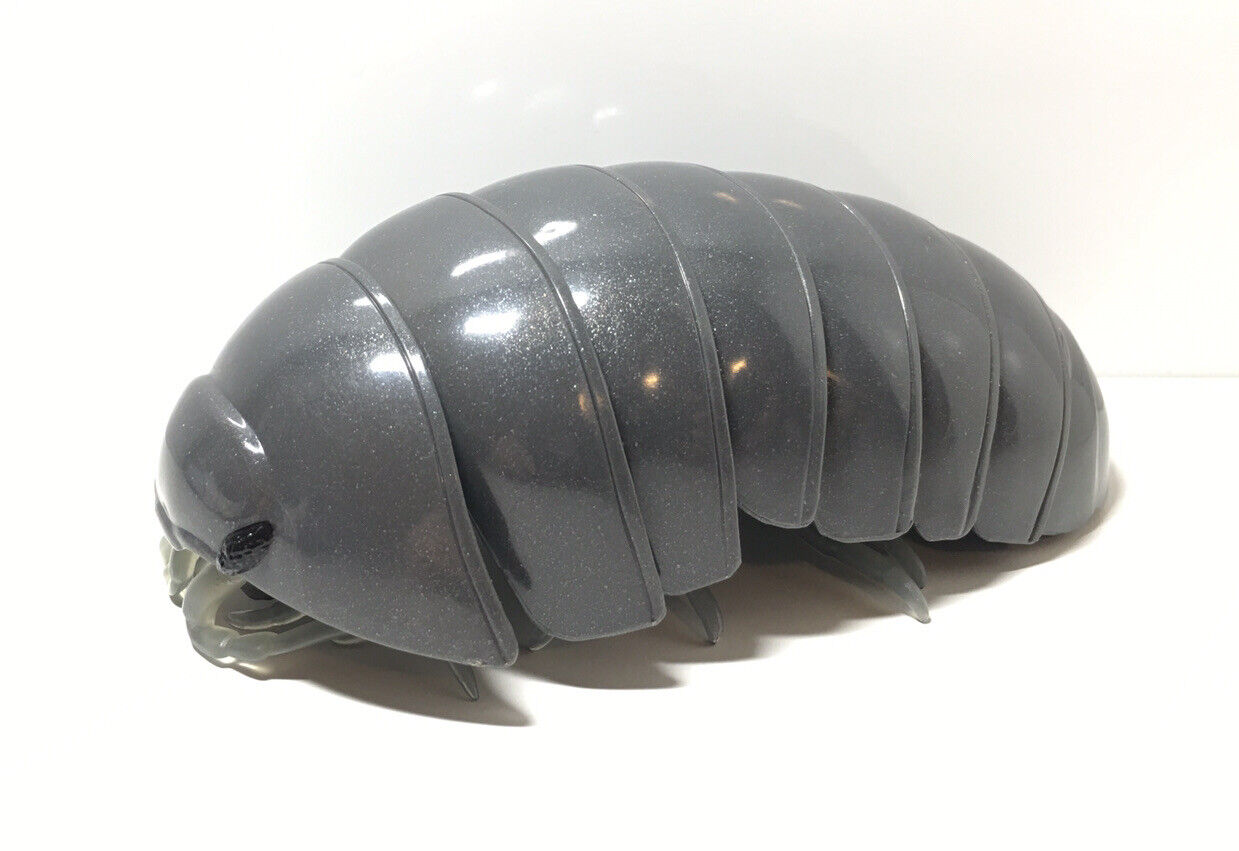-40%
4 Yellow 88 mm Square Handle Slide Set Butterfly 2 Bug Plant Leaf 3 Flowers
$ 15.83
- Description
- Size Guide
Description
4 handle specimen slide set (Yellow handles)Real butterfly (The Common Tiger - Danaus genutia), pair of Spotted Red Bug - Parastrachia napaensis, Peanut leaf (Peanut - Arachis hypogaea) , flower of Garland Chrysanthemum - Chrysanthemum coronarium & Garden Lobelia - Lobelia erinus & Viola Herb flower - Viola prionantha specimen encased in indestructible lucite block. The lucite blocks are encased in a plastic handle for easy obervation.
Safe, authentic and completely unbreakable product put real specimens right at your fingertips!
Anyone can safely explore the specimens from every angle.
Selltotheworld
From all around the world
4 Yellow 88 mm Square Handle Slide Set Butterfly 2 Bug Plant Leaf 3 Flowers
4 handle specimen slide set (
Yellow handles
)
Real
butterfly (
The Common Tiger -
Danaus genutia
), pair of
Spotted Red Bug -
Parastrachia napaensis
,
Peanut leaf
(
Peanut -
Arachis hypogaea
)
, flower of
Garland Chrysanthemum
-
Chrysanthemum coronarium
&
Garden Lobelia -
Lobelia
erinus &
Viola Herb flower -
Viola prionantha
specimen encased in indestructible lucite block. The lucite blocks are encased in a plastic handle for easy obervation.
Safe, authentic and completely unbreakable product put real specimens right at your fingertips!
Anyone can safely explore the specimens from every angle.
The pictures of butterfly show the top and reverse side of the butterfly.
The butterfly wings are disassembled and laminated before embedding into the material so as to retain 100% of the original color(colors of butterfly are mostly powder particles attached to the wings), otherwise up to 90% of the color will be dissolved into the Lucite material after production and the wings become almost transparent.
Size of each handle is 8.8x16.5x2.6 cm (3.5x6.5x1.0 inch).
Weight of each handle is 105 gram.
These are handmade real animal and plant specimen crafts. Each one will be a bit different (specimen size, color and posture) even in the same production batch.
The pictures in the listing are just for reference as we are selling multiple pieces with same pictures.
These are ideal learning aids for students and kids and also are very good collectible items.
***
The Common Tiger -
Danaus genutia
Wingspan: 8 cm
Distribution: China, Sri Lanka, India to Myanmar, Thailand, Laos, Vietnam, Malaysia, Singapore
It belongs to the "Crows and Tigers", that is, the danainae group of the Brush-footed butterflies family. The butterfly is also called Striped Tiger.
The butterfly closely resembles the Monarch butterfly (Danaus plexippus) of the Americas.
The wingspan is 75 to 95 mm. Both sexes of the butterfly have tawny wings with veins marked with broad black bands. The female has a pouch on the hindwing. The margins of the wings are black with two rows of white spots. The underside of the wings resembles the the upperside but is paler in colouration. The male Common Tiger has a prominent black-and-white spot on the underside of the hindwing.
In drier regions the tawny part of the hindwing pales and approaches white in colour making it very similar to the White Tiger Danaus melanippus.
It has some 16 subspecies; its evolutionary relationships are not completely resolved, but it appears to be closest to the Malay Tiger and White Tiger.
The butterfly occurs in scrub jungles, fallowland adjacent to habitation, dry and moist deciduous forests, preferring areas of moderate to heavy rainfall. Also occurs in degraded hill slopes and ridges, both, bare or denuded, and, those covered with secondary growth.
While the butterfly is a strong flier, it never flies rapidly or high. It has stronger and faster strokes than the Plain Tiger. The butterfly ranges forth in search of its host and nectar plants. It visits gardens where it nectars on the flowers of Lantana, Celosia, Adelocaryum, Cosmos, Zinnia and other garden plants.
Members of this genus are leathery, tough to kill and sham death. Since they are unpleasant to smell and taste, they are soon released by the predators, recover and fly off soon thereafter.
Spotted Red Bug -
Parastrachia napaensis
Order: Hemiptera Suborder: Heteroptera Family: Parastrachiidae Genus:
Parastrachia
Distribution: Western, central and southern China, India, Nepal, Myanmar.
Size:- length: 16 -21 mm width: 9.5 – 12 mm
Scarlet, with dense punctures. Cephalic lobe longer than the middle of the side edges upturned; back of the base with black horizontal stripes, some individuals with no or obvious; antennae black, Section 2, Section 3 longer. Pronotum front, before most of the large central horizontal stripes, scutellum (except for the end of the outside), the central portion of the great circle spots leathery forewings and foot and ventral abdomen of some plaques are black. Forewing membrane sewage smoked, at the edge of pale, transparent, slightly longer end over the abdomen.
Peanut -
Arachis hypogaea
Order: Fabales Family: Fabaceae Subfamily: Faboideae Tribe: Aeschynomeneae
Genus:
Arachis
Species:
A. hypogaea
The
peanut
, or
groundnut
(
Arachis hypogaea
), is a species in the legume "bean" family (Fabaceae). The cultivated peanut was likely first domesticated in the valleys of the Paraguay and Parana rivers in the Chaco region of Paraguay and Bolivia.[1] It is an annual herbaceous plant growing 30 to 50 cm (0.98 to 1.6 ft) tall. The leaves are opposite, pinnate with four leaflets (two opposite pairs; no terminal leaflet), each leaflet 1 to 7 cm (⅜ to 2¾ in) long and 1 to 3 cm (⅜ to 1 inch) broad. The flowers are a typical peaflower in shape, 2 to 4 cm (¾ to 1½ in) across, yellow with reddish veining. After pollination, the fruit develops into a legume 3 to 7 cm (1.2 to 2.8 in) long, containing 1 to 4 seeds, which forces its way underground to mature.
Hypogaea
means "under the earth."
Peanuts are known by many local names, including
earthnuts
,
ground nuts
,
goober peas
,
monkey nuts
,
pygmy nuts
and
pig nuts
. The term "Monkey nut" is often used to mean the entire pod. (The terms
earthnut, groundnut
and
pignut
can also refer to Conopodium majus or to tubers of the Bunium family.)
Garland C
hrysanthemum
-
Chrysanthemum coronarium
It is also known as
chrysanthemum greens
or
edible chrysanthemum
, is a leaf vegetable in the genus
Leucanthemum
.
Order: Asterales
Family: Asteraceae
Genus:
Chrysanthemum
Species:
C. coronarium
It is popular in Korean traditional soups, stews, hot pots, and casseroles, Cantonese cuisine, especially in the cuisine of Hong Kong, and in the Japanese in
Nabemono
. Overcooking should be avoided and it is recommended to add it at the last moment to hot pot since it easily loses the structure. The leaves are an important ingredient in Taiwanese Oyster omelettes and, when young, are used along with stems to flavor soup and stir-fry.
A leafy herb, the Garland chrysanthemum is one of the few annual plants in its genus and has yellow florets grouped in small rayed flower heads and aromatic, bipinnately lobed leaves. The vegetable grows very well in mild or slightly cold climates, but will go quickly into premature flowering in warm summer conditions. Seeds are sown in early spring and fall.
Garden Verbena -
Verbena hybrida
Family :
Verbenaceae
Genus: Verbena
Plant Form :
Herb
Habit :
A herbaceous perennial but generally grown as an annual.
Leaves :
Opposite, highly dissected, hairy.
Inflorescence :
Flower heads on erect stalks making spikes consisting of tiny flowers.
Flowers :
Flowers showy and in a wide variety of colours from blue, violet, purple, rose, red, yellow white to bicolors.
Fruit :
Berry
Flowering and Fruiting Time :
May – October
Significance :
It is generally used for bedding, edging or in rock gardens.
Verbena
x
hybrida
, commonly called garden verbena, is a short-lived perennial. It is noted for its profuse bloom of small five-petaled flowers in rounded clusters (to 3” wide) from late spring to fall on plants ranging in size from mat-forming/trailing (to 10” tall) to bushy/upright (to 20: tall). Flower colors include blue, violet, purple, rose, dark red, yellow, white and bicolor. Some varieties are fragrant. Oblong toothed leaves (to 4” long) are gray-green to dark green.
Genus name comes from a Latin name used for some plants in religious ceremonies and also in medicine.
It is grown as an annual in average, medium moisture, well-drained soils in full sun. Tolerates light shade, but best flowering usually occurs in full sun. Plants have good heat and drought tolerance. Avoid overhead watering to the extent possible. Most are seed strains that can be started indoors 8-10 weeks before last spring frost date. Place plants outdoors in spring after last frost date. Young plants may be pinched to promote bushier growth. Deadhead spent flowers to encourage additional bloom. Plants may decline in summer periods of prolonged hot and dry conditions. Cuttings may be taken in late summer and overwintered indoors.
Garden uses: Beds, borders, rock gardens, edging or annual ground cover. Window boxes and containers. Trailing types for hanging baskets.
Viola Herb -
Viola prionantha
Order: Malpighiales Family: Violaceae Genus:
Viola
Range
E. Asia - China, Japan, Korea.
Habitat
Grasslands, streamsides, alongside houses at elevations of 2100 - 3200 metres
Edibility Rating
2 (1-5)
Medicinal Rating
0 (1-5)
Physical Characteristics
Perennial growing to 0.1m.
It is hardy to zone 0. It is in flower from April to May, and the seeds ripen from May to September. The flowers are hermaphrodite (have both male and female organs) and are pollinated by Insects.
The plant prefers light (sandy), medium (loamy) and heavy (clay) soils and requires well-drained soil. The plant prefers acid and neutral soils. It can grow in semi-shade (light woodland) or no shade. It requires moist soil.
Habitats
Cultivated Beds;
Edible Uses
Edible Parts: Flowers; Leaves.
Edible Uses
: Tea.
Young leaves and flower buds - raw or cooked. Eaten in times of want. When added to soup they thicken it in much the same way as okra. The flowers of this species are usually purplish - some caution is advised if plants of this genus have yellow flowers since these can cause diarrhoea if eaten in large quantities. A tea can be made from the leaves.
Cultivation details
We have very little information on this species and do not know if it will be hardy in Britain, though judging by its native range it should succeed outdoors in most parts of the country. The following notes are based on the general needs of the genus. Prefers a cool moist well-drained humus-rich soil in partial or dappled shade and protection from scorching winds. Tolerates sandstone and limestone soils but becomes chlorotic if the pH is too high. Prefers a pH between 6 and 6.5. All members of this genus have more or less edible leaves and flower buds, though those species with yellow flowers can cause diarrhoea if eaten in large quantities.
Propagation
Seed - best sown in the autumn in a cold frame. Sow stored seed in early spring in a cold frame. Prick out the seedlings into individual pots when they are large enough to handle and plant them out in the summer. Division in the autumn or just after flowering. Larger divisions can be planted out direct into their permanent positions, though we have found that it is best to pot up smaller divisions and grow them on in light shade in a greenhouse or cold frame until they are growing away well. Plant them out in the summer or the following spring.
Item Specifics
Country/Region of Manufacture :
China
Modification Description :
NA
Material :
Resin
Type :
Collector Plate
California Prop 65 Warning :
NA
Modified Item :
No
Handmade :
Yes
Payment
By Paypal
Shipping
Free shipping cost.
We send the goods to USA, Canada, UK, Australia, New Zealand, EU countries and some other European and Asian countries by E-express, a kind of fast postal service by Hong Kong Post. It usually takes about 6 to 10 working days for delivery.
We send the goods to other countries by registered airmail and will take about 8 to 14 working days for delivery.
Returns
Returns: We accept returns with any reason in 30 days.
Contact Us
We will answer buyer messages within 24 hours during working days.
Selltotheworld
From all around the world
DESCRIPTION
PAYMENT
SHIPPING
RETURN POLICY
CONTACT US
4 Yellow 88 mm Square Handle Slide Set Butterfly 2 Bug Plant Leaf 3 Flowers
4 handle specimen slide set (
Yellow handles
)
Real
butterfly (
The Common Tiger -
Danaus genutia
), pair of
Spotted Red Bug -
Parastrachia napaensis
,
Peanut leaf
(
Peanut -
Arachis hypogaea
)
, flower of
Garland Chrysanthemum
-
Chrysanthemum coronarium
&
Garden Lobelia -
Lobelia
erinus &
Viola Herb flower -
Viola prionantha
specimen encased in indestructible lucite block. The lucite blocks are encased in a plastic handle for easy obervation.
Safe, authentic and completely unbreakable product put real specimens right at your fingertips!
Anyone can safely explore the specimens from every angle.
The pictures of butterfly show the top and reverse side of the butterfly.
The butterfly wings are disassembled and laminated before embedding into the material so as to retain 100% of the original color(colors of butterfly are mostly powder particles attached to the wings), otherwise up to 90% of the color will be dissolved into the Lucite material after production and the wings become almost transparent.
Size of each handle is 8.8x16.5x2.6 cm (3.5x6.5x1.0 inch).
Weight of each handle is 105 gram.
These are handmade real animal and plant specimen crafts. Each one will be a bit different (specimen size, color and posture) even in the same production batch.
The pictures in the listing are just for reference as we are selling multiple pieces with same pictures.
These are ideal learning aids for students and kids and also are very good collectible items.
***
The Common Tiger -
Danaus genutia
Wingspan: 8 cm
Distribution: China, Sri Lanka, India to Myanmar, Thailand, Laos, Vietnam, Malaysia, Singapore
It belongs to the "Crows and Tigers", that is, the danainae group of the Brush-footed butterflies family. The butterfly is also called Striped Tiger.
The butterfly closely resembles the Monarch butterfly (Danaus plexippus) of the Americas.
The wingspan is 75 to 95 mm. Both sexes of the butterfly have tawny wings with veins marked with broad black bands. The female has a pouch on the hindwing. The margins of the wings are black with two rows of white spots. The underside of the wings resembles the the upperside but is paler in colouration. The male Common Tiger has a prominent black-and-white spot on the underside of the hindwing.
In drier regions the tawny part of the hindwing pales and approaches white in colour making it very similar to the White Tiger Danaus melanippus.
It has some 16 subspecies; its evolutionary relationships are not completely resolved, but it appears to be closest to the Malay Tiger and White Tiger.
The butterfly occurs in scrub jungles, fallowland adjacent to habitation, dry and moist deciduous forests, preferring areas of moderate to heavy rainfall. Also occurs in degraded hill slopes and ridges, both, bare or denuded, and, those covered with secondary growth.
While the butterfly is a strong flier, it never flies rapidly or high. It has stronger and faster strokes than the Plain Tiger. The butterfly ranges forth in search of its host and nectar plants. It visits gardens where it nectars on the flowers of Lantana, Celosia, Adelocaryum, Cosmos, Zinnia and other garden plants.
Members of this genus are leathery, tough to kill and sham death. Since they are unpleasant to smell and taste, they are soon released by the predators, recover and fly off soon thereafter.
Spotted Red Bug -
Parastrachia napaensis
Order: Hemiptera Suborder: Heteroptera Family: Parastrachiidae Genus:
Parastrachia
Distribution: Western, central and southern China, India, Nepal, Myanmar.
Size:- length: 16 -21 mm width: 9.5 – 12 mm
Scarlet, with dense punctures. Cephalic lobe longer than the middle of the side edges upturned; back of the base with black horizontal stripes, some individuals with no or obvious; antennae black, Section 2, Section 3 longer. Pronotum front, before most of the large central horizontal stripes, scutellum (except for the end of the outside), the central portion of the great circle spots leathery forewings and foot and ventral abdomen of some plaques are black. Forewing membrane sewage smoked, at the edge of pale, transparent, slightly longer end over the abdomen.
Peanut -
Arachis hypogaea
Order: Fabales Family: Fabaceae Subfamily: Faboideae Tribe: Aeschynomeneae
Genus:
Arachis
Species:
A. hypogaea
The
peanut
, or
groundnut
(
Arachis hypogaea
), is a species in the legume "bean" family (Fabaceae). The cultivated peanut was likely first domesticated in the valleys of the Paraguay and Parana rivers in the Chaco region of Paraguay and Bolivia.[1] It is an annual herbaceous plant growing 30 to 50 cm (0.98 to 1.6 ft) tall. The leaves are opposite, pinnate with four leaflets (two opposite pairs; no terminal leaflet), each leaflet 1 to 7 cm (⅜ to 2¾ in) long and 1 to 3 cm (⅜ to 1 inch) broad. The flowers are a typical peaflower in shape, 2 to 4 cm (¾ to 1½ in) across, yellow with reddish veining. After pollination, the fruit develops into a legume 3 to 7 cm (1.2 to 2.8 in) long, containing 1 to 4 seeds, which forces its way underground to mature.
Hypogaea
means "under the earth."
Peanuts are known by many local names, including
earthnuts
,
ground nuts
,
goober peas
,
monkey nuts
,
pygmy nuts
and
pig nuts
. The term "Monkey nut" is often used to mean the entire pod. (The terms
earthnut, groundnut
and
pignut
can also refer to Conopodium majus or to tubers of the Bunium family.)
Garland C
hrysanthemum
-
Chrysanthemum coronarium
It is also known as
chrysanthemum greens
or
edible chrysanthemum
, is a leaf vegetable in the genus
Leucanthemum
.
Order: Asterales
Family: Asteraceae
Genus:
Chrysanthemum
Species:
C. coronarium
It is popular in Korean traditional soups, stews, hot pots, and casseroles, Cantonese cuisine, especially in the cuisine of Hong Kong, and in the Japanese in
Nabemono
. Overcooking should be avoided and it is recommended to add it at the last moment to hot pot since it easily loses the structure. The leaves are an important ingredient in Taiwanese Oyster omelettes and, when young, are used along with stems to flavor soup and stir-fry.
A leafy herb, the Garland chrysanthemum is one of the few annual plants in its genus and has yellow florets grouped in small rayed flower heads and aromatic, bipinnately lobed leaves. The vegetable grows very well in mild or slightly cold climates, but will go quickly into premature flowering in warm summer conditions. Seeds are sown in early spring and fall.
Garden Verbena -
Verbena hybrida
Family :
Verbenaceae
Genus: Verbena
Plant Form :
Herb
Habit :
A herbaceous perennial but generally grown as an annual.
Leaves :
Opposite, highly dissected, hairy.
Inflorescence :
Flower heads on erect stalks making spikes consisting of tiny flowers.
Flowers :
Flowers showy and in a wide variety of colours from blue, violet, purple, rose, red, yellow white to bicolors.
Fruit :
Berry
Flowering and Fruiting Time :
May – October
Significance :
It is generally used for bedding, edging or in rock gardens.
Verbena
x
hybrida
, commonly called garden verbena, is a short-lived perennial. It is noted for its profuse bloom of small five-petaled flowers in rounded clusters (to 3” wide) from late spring to fall on plants ranging in size from mat-forming/trailing (to 10” tall) to bushy/upright (to 20: tall). Flower colors include blue, violet, purple, rose, dark red, yellow, white and bicolor. Some varieties are fragrant. Oblong toothed leaves (to 4” long) are gray-green to dark green.
Genus name comes from a Latin name used for some plants in religious ceremonies and also in medicine.
It is grown as an annual in average, medium moisture, well-drained soils in full sun. Tolerates light shade, but best flowering usually occurs in full sun. Plants have good heat and drought tolerance. Avoid overhead watering to the extent possible. Most are seed strains that can be started indoors 8-10 weeks before last spring frost date. Place plants outdoors in spring after last frost date. Young plants may be pinched to promote bushier growth. Deadhead spent flowers to encourage additional bloom. Plants may decline in summer periods of prolonged hot and dry conditions. Cuttings may be taken in late summer and overwintered indoors.
Garden uses: Beds, borders, rock gardens, edging or annual ground cover. Window boxes and containers. Trailing types for hanging baskets.
Viola Herb -
Viola prionantha
Order: Malpighiales Family: Violaceae Genus:
Viola
Range
E. Asia - China, Japan, Korea.
Habitat
Grasslands, streamsides, alongside houses at elevations of 2100 - 3200 metres
Edibility Rating
2 (1-5)
Medicinal Rating
0 (1-5)
Physical Characteristics
Perennial growing to 0.1m.
It is hardy to zone 0. It is in flower from April to May, and the seeds ripen from May to September. The flowers are hermaphrodite (have both male and female organs) and are pollinated by Insects.
The plant prefers light (sandy), medium (loamy) and heavy (clay) soils and requires well-drained soil. The plant prefers acid and neutral soils. It can grow in semi-shade (light woodland) or no shade. It requires moist soil.
Habitats
Cultivated Beds;
Edible Uses
Edible Parts: Flowers; Leaves.
Edible Uses
: Tea.
Young leaves and flower buds - raw or cooked. Eaten in times of want. When added to soup they thicken it in much the same way as okra. The flowers of this species are usually purplish - some caution is advised if plants of this genus have yellow flowers since these can cause diarrhoea if eaten in large quantities. A tea can be made from the leaves.
Cultivation details
We have very little information on this species and do not know if it will be hardy in Britain, though judging by its native range it should succeed outdoors in most parts of the country. The following notes are based on the general needs of the genus. Prefers a cool moist well-drained humus-rich soil in partial or dappled shade and protection from scorching winds. Tolerates sandstone and limestone soils but becomes chlorotic if the pH is too high. Prefers a pH between 6 and 6.5. All members of this genus have more or less edible leaves and flower buds, though those species with yellow flowers can cause diarrhoea if eaten in large quantities.
Propagation
Seed - best sown in the autumn in a cold frame. Sow stored seed in early spring in a cold frame. Prick out the seedlings into individual pots when they are large enough to handle and plant them out in the summer. Division in the autumn or just after flowering. Larger divisions can be planted out direct into their permanent positions, though we have found that it is best to pot up smaller divisions and grow them on in light shade in a greenhouse or cold frame until they are growing away well. Plant them out in the summer or the following spring.
Item Specifics
Country/Region of Manufacture :
China
Modification Description :
NA
Material :
Resin
Type :
Collector Plate
California Prop 65 Warning :
NA
Modified Item :
No
Handmade :
Yes
Payment
By Paypal
Shipping
Free shipping cost.
We send the goods to USA, Canada, UK, Australia, New Zealand, EU countries and some other European and Asian countries by E-express, a kind of fast postal service by Hong Kong Post. It usually takes about 6 to 10 working days for delivery.
We send the goods to other countries by registered airmail and will take about 8 to 14 working days for delivery.
Returns
Returns: We accept returns with any reason in 30 days.
Contact Us
We will answer buyer messages within 24 hours during working days.
All right reserved.
Shop Category
Store Home
Fossils
◈ Insects
◈ Plants
◈ Trilobite
◈ Sea animals
Tektite
◈ Loose lots
◈ Single stone
◈ Silver wired pendant
◈ Tiktite hanger
Lapis Lazuli
▷ Polished stones
♢ Loose lots
♢ Single stones
▷ Rough stones
♢ Loose lots
♢ Single stone
◈ Craft items
Turquoise
◈ Natural turquoise
◈ Turquoise substitutes
Stone carving
Rough Stone & mineral
◈ Single piece
◈ Loose lots
Polished Stone & mineral
◈ Single piece
◈ Loose lots
Rough ruby & sapphire
◈ Ruby
◈ Sapphire
Star Ruby & Sapphire
◈ Star Ruby - Opaque
◈ Star Ruby - Transparent
◈ Blue Star Sapphire
◈ Star Sapphire - other colors
Animal specimen items
◈ Life cycle
◈ Collection set
◈ Key ring
◈ Bracelet or bangle
◈ Necklace or pendant
◈ Magnet
◈ Ring
◈ Hanger
◈ Cabochon
◈ Sphere, ball
◈ Laminated specimen
◈ Computer mouse
◈ Stapler
◈ Pen
◈ Bottle Opener
◈ Dome paperweight
◈ Earring
◈ Skeleton
◈ Fish
▷ Single specimens
♢ Spider
♢ Scorpion
♢ Beetle
♢ Marine animal
♢ Bug
♢ Bee, wasp, hornet
♢ Other insects
♢ Bat
♢ Other animal
▷ Butterfly
♢ Butterfly paperweight
♢ Laminated butterfly
Plant specimen
◈ Flower
◈ Leaf
◈ Life Cycle
◈ Collection Set
◈ Laminated items
◈ Seed or root
Stone, mineral, fossil box set
Jewelry crafts
Paper cuts
◈ Small set
◈ Large set
◈ Single piece
Other
Hot Item
Insect Cabochon Golden Scorpion Oval 12x18 mm on Black Bottom 10 pieces Lot
USD 25.00
Insect Cabochon Golden Scorpion Oval 18x25 mm on black bottom 5 pieces Lot
USD 17.00
10 Mohs Scale Stone Set clear plastic box Learning Real Specimen Kit
USD 20.00
Black Indochinite Tektite Stone 10 pieces Plastic Box Set Natural Specimen Kit
USD 18.00
Chinese Water Snake Skeleton in 110x45x18 mm Block Education Animal Specimen
USD 35.00
Picture
New List Item
6 Stages Corn Life Cycle Set German Labelled in Amber Clear Block Learning Aid
USD 27.99
Insect Acrylic Table Stand Golden Stag Beetle Specimen Clear AD009-2
USD 19.99
Turtle Cockroach Eupolyphaga sinensis in Small Block Education Insect Specimen
USD 11.99
Cinnabar Single Crystal Stone up to 1 Carat Tiny pieces 300 gram Lot
USD 169.99
Oriental Garden Lizard Skeleton in Amber Clear Block Education Animal Specimen
USD 29.99
Custom Item








